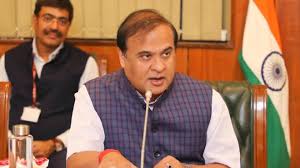
Overlooking Land Access Near Chicken Neck in 1971 Now Fueling Assam’s Inflation: CM

 :
| Updated On: 27-May-2025 @ 3:47 pm
:
| Updated On: 27-May-2025 @ 3:47 pmSHARE
Assam Chief Minister Himanta Biswa Sarma has linked the rising prices of essential commodities in Assam to what he called “historic political blunders,” specifically referencing India’s failure to secure strategic land around the Chicken’s Neck corridor following the 1971 India-Bangladesh war. Speaking at the Northeast Investment Summit in New Delhi, Sarma said that this oversight continues to impose logistical burdens on Assam, contributing to increased costs for transporting goods. He cited the example of the higher cost of potatoes brought from Delhi as a result of the limited connectivity through the narrow Siliguri Corridor — a region commonly known as the Chicken’s Neck — that links the Northeast to the rest of India.
Sarma emphasized that had India taken control of the land surrounding the Chicken’s Neck post-1971, the present-day logistical challenges faced by Assam could have been avoided. He urged the central government, including NITI Aayog and other policy-makers, to consider special policy relief for Assam and other Northeastern states in light of these constraints.
In the context of recent restrictions imposed by the central government on imports from Bangladesh, Chief Minister Sarma has become increasingly vocal about India’s geopolitical vulnerabilities in relation to Bangladesh. He specifically addressed Bangladesh’s perceived aggressive stance and "habitual threats" over the Siliguri Corridor, which he noted is of immense strategic importance to India. This corridor — just about 22 km wide at its narrowest — is a lifeline connecting the Northeastern states with the rest of the Indian mainland.
In response to these threats, Sarma took to a microblogging platform to highlight Bangladesh’s own geographical vulnerabilities. He identified two major choke points within Bangladesh that he claimed were more fragile than India’s Siliguri Corridor. The first is the 80-km-long North Bangladesh Corridor, which stretches from Dakshin Dinajpur in India to South West Garo Hills in Meghalaya. According to Sarma, disruption in this corridor could isolate Bangladesh’s Rangpur division, affecting its internal connectivity. The second corridor he referenced is the 28-km-long Chittagong Corridor, which serves as the sole overland link between Bangladesh’s political and economic capitals. Any interruption to this corridor, he warned, could seriously hamper the nation’s internal logistics.
Sarma’s commentary reflects a broader geopolitical narrative where he contrasts the vulnerability of India’s connectivity with Bangladesh’s own strategic limitations, thereby challenging the rationale behind Bangladesh’s aggressive posture regarding the Chicken’s Neck.
Further intensifying his critique, Sarma revisited the historical decision-making of the 1971 Indira Gandhi-led government. On May 11, he publicly described the creation of Bangladesh as a “historic opportunity lost,” blaming what he saw as a lack of political foresight and leadership. In his view, India could have used the post-war advantage to secure more favorable territorial and strategic outcomes.
Overall, Sarma’s remarks are aimed at sparking national discourse on correcting past mistakes, highlighting Northeast India’s infrastructural disadvantages, and strengthening India’s strategic posture in response to perceived threats from neighboring countries.
Contact Us
House. No. : 163, Second Floor Haridev Rd, near Puberun Path, Hatigaon,Guwahati, Assam 781038.
E-mail : assaminkcontact@gmail.com
Contact : +91 8811887662
Enquiry
×
Reporter Login
×